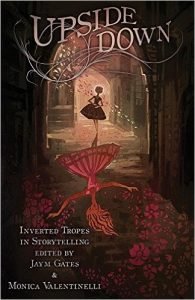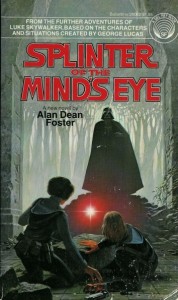“This compendium of literary undercutting and rebuilding is both enjoyable to read and an incisive work of commentary on the genre.”
— Publishers Weekly (Starred Review)
Now Available!
Upside Down: Inverted Tropes in Storytelling is an anthology of short stories, poetry, and essays edited by Monica Valentinelli and Jaym Gates. Over two dozen authors, ranging from NYT-bestsellers and award winners to debut writers, chose a tired trope or cliche to challenge and surprise readers through their work.
Read stories inspired by tropes such as the Chainmaille Bikini, Love at First Sight, Damsels in Distress, Yellow Peril, The Black Man Dies First, The Villain Had a Crappy Childhood, The Singularity Will Cause the Apocalypse, and many more…then discover what these tropes mean to each author to find out what inspired them.
Join Maurice Broaddus, Adam Troy-Castro, Delilah S. Dawson, Shanna Germain, Sara M. Harvey, John Hornor Jacobs, Rahul Kanakia, Alethea Kontis, Valya Dudycz Lupescu, Haralmbi Markov, Sunil Patel, Kat Richardson, Nisi Shawl, Ferrett Steinmetz, Anton Strout, Michael Underwood, Alyssa Wong and many other authors as they take well-worn tropes and cliches and flip them upside down.
CONTENTS
Introduction — Jerry Gordon
SECTION I: INVERTING THE TROPES
On Loving Bad Boys: A Villanelle — Valya Dudycz Lupescu
Single, Singularity — John Hornor Jacobs
Lazzrus — Nisi Shawl
Seeking Truth — Elsa Sjunneson-Henry
Thwock — Michelle Muenzler
Can You Tell Me How to Get to Paprika Place? — Michael R. Underwood
Chosen — Anton Strout
The White Dragon — Alyssa Wong
Her Curse, How Gently It Comes Undone — Haralambi Markov
Burning Bright — Shanna Germain
Santa CIS (Episode 1: No Saint) — Alethea Kontis
Requiem for a Manic Pixie Dream — Katy Harrad & Greg Stolze
The Refrigerator in the Girlfriend — Adam-Troy Castro
The First Blood of Poppy Dupree — Delilah S. Dawson
Red Light — Sara M. Harvey
Until There Is Only Hunger — Michael Matheson
Super Duper Fly — Maurice Broaddus
Drafty as a Chain Mail Bikini — Kat Richardson
Swan Song — Michelle Lyons-McFarland
Those Who Leave — Michael Choi
Nouns of Nouns: A Mini Epic — Alex Shvartsman
Excess Light — Rahul Kanakia
The Origin of Terror — Sunil Patel
The Tangled Web — Ferrett Steinmetz
Hamsa, Hamsa, Hamsa, Tfu, Tfu, Tfu. — Alisa Schreibman
Real Women Are Dangerous — Rati Mehrotra
SECTION II: DISCUSSING THE TROPES
I’m Pretty Sure I’ve Read This Before … — Patrick Hester
Fractured Souls — Lucy A. Snyder
Into the Labyrinth: The Heroine’s Journey — A.C. Wise
Escaping the Hall of Mirrors — Victor Raymond
Tropes as Erasers: A Transgender Perspective — Keffy R.M. Kehrli
SECTION III: DEFINING THE TROPES
Afterword — Monica Valentinelli & Jaym Gates
Trope Definitions/Index of Tropes
SECTION IV: ACKNOWLEDGMENTS AND ADDITIONAL BIOS
Book Details:
Cover artist Galen Dara
TPB ISBN: 978-1-937009-44-1
HC ISBN: 978-1-937009-46-5
366 Pages
Monica Valentinelli is an editor, writer, and game developer who lurks in the dark. Her work includes stories, games, and comics for her original settings as well as media/tie-in properties such as the Firefly TV show, Brandon Sanderson’s Mistborn, and Vampire: The Masquerade. Her nonfiction includes reference materials such as Firefly: The Gorramn Shiniest Language Guide and Dictionary in the ‘Verse, and essays in books like For Exposure: The Life and Times of a Small Press Publisher. For more about Monica, visit www.booksofm.com.
Jaym Gates is an editor, author, and communications manager. She’s the editor of the Rigor Amortis, War Stories, Exalted, and Genius Loci anthologies, as well as a published author in fiction, academic nonfiction, and RPGs.


